-

GETTING THEREI fly on Lufthansa (www.lufthansa.com) from Singapore to Marseille via Frankfurt.
From the French port-city of Marseille, we transfer by van to Avignon, where we begin our seven-day journey in Provence organised by luxury travel company Country Holidays (www.countryholidays.com.sg).
Its Provence Hiking Gourmet trip highlights three days of moderate hiking, and good food throughout the week, including at Michelin-starred restaurants. Our luggage is transported from village to village while we walk.
A trip from June 4 to 10, under the company's Signature Departures collection for small groups of up to 16 guests, starts at $7,350 a person. There is one place left. The price includes meals and wine; the services of English-speaking French trekking guides, local guides and a Country Holidays concierge; excursions; hotel rooms, ground transport, insurance and gratuities. Airfare is excluded.
For next year, tentative dates for Provence are June 2 to 10, but the cost is not yet confirmed. Country Holidays can customise similar private tours in Provence.
Another walking itinerary, with nightly kaiseki, is the Kumano Kodo Trail in Japan. Tentative dates are May 20 to 25 next year; price to be confirmed.
For more information about the Provence and Kumano Kodo walking holidays for both the Signature Departures and private tours, e-mail enquiries@ countryholidays.com.sg or call 6334-6120.
-
TRAVEL TIPS
• Wander on your own sometimes to deeply savour the vistas of Provence and its cities. There are ancient Roman stones to touch, little gardens or museums to explore and cafes to linger in.
• Ask about outdoor markets, which usually open in the morning until lunchtime on certain days. In summer, there is an abundance of strawberries, olives and honey. Some markets close in winter. Besides farmers' markets, there are speciality markets for organic produce, flowers, antiques and more.
• France is prone to strikes that can crimp travel, so plan enough time to get from place to place, especially to the airport.
Essence of Provence: Sun-lit sensuousness, sumptuous food, hilltop cities
A walking gourmet journey in southern France reveals places of sun-lit sensuousness, hidden Michelin-starred restaurants and hilltop cities that allude to past turmoil
Summer in Provence turns travellers into pleasure-seekers who sip rose wine and stroll through villages rich in Roman ruins. I savour that and also search daily for perfumed strawberries in season.
And yet, Provence is never just about the sweet French life. It is also an arena for the adventurous who trek up mountains, kayak and cycle like world champions. The wind-whipped summit of Mont Ventoux - nicknamed the Beast of Provence - is a gruelling point on the Tour de France cycling race.
The essence of Provence, in both its sun-lit sensuousness and ruggedness, is revealed in my seven-day walking gourmet trip, where we toggle naturally between the indulgent life and 12km-long hikes in southern France.
So, for three days, we walk in fields scented by wild lemon thyme and pass vineyards in this land of the sweet, golden muscat grape, under the bluest Mediterranean sky. Then, in our hiking boots, we lunch well on fresh Provencal cuisine.
Other days, we spend time in little cities, intimate and varied, among them Arles, where Vincent van Gogh discovered the southern sunshine that infused his later post-Impressionist art. Also lovely are Gordes, a chic city poised theatrically atop a hill, and Avignon, a residence of French popes. We dine sumptuously everywhere (see other story).
COUNTRYSIDE: LACEY MOUNTAINS, SOFT MISTRAL
Our walks in Provence are gently bracing and we are never too far from civilisation - a Benedictine monastery on the edge of the woods, a mediaeval castle in the distance.
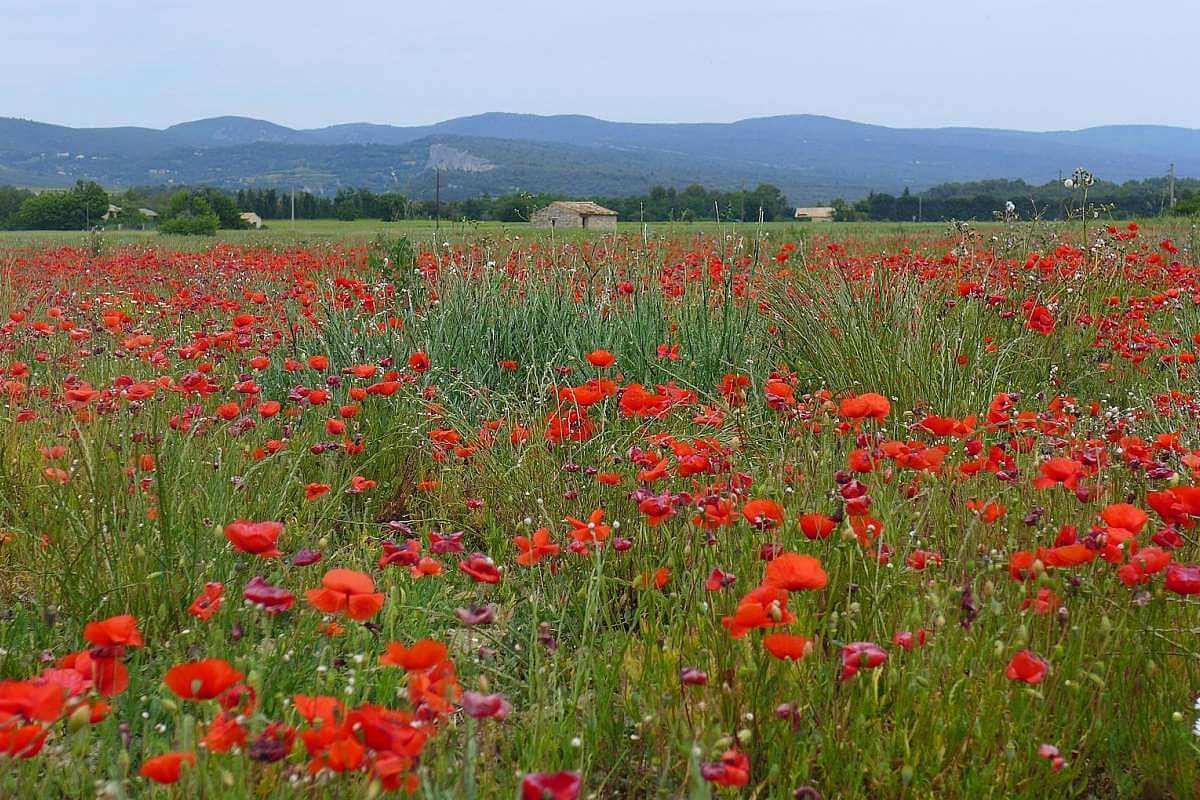
That is partly because the Provence region is more populated in its rustic Rhone Valley - where I am travelling - apart from its glitzy Mediterranean coast, where the rich and famous converge on Cannes and Saint-Tropez.
Our journey on foot begins lightly, as two French guides lead us, 11 Singaporeans and Hong Kongers, out of the village of Vaison- la-Romaine. This castle-city is perched on a high, imposing rock, like a fantastical eyrie, and we look back in wonder as we start walking on forested trails and country roads used by farmers.
Beautiful walled cities like Vaison- la-Romaine, however, were fortified against Middle Ages marauders such as the Germanic-speaking Franks and set on hilltops for survival, not to please the eye.
But that summer's day, I am not thinking about Provence's bloodier days, not when the mistral wind is soft, creating a soundscape of whispery leaves that set our senses atingle. In contrast, during spring and winter, the mistral tends to be fierce and cold, blowing for days - though that cleanses the air for a transparency loved by painters and vacationers.
That day, too, we circumnavigate the Dentelles de Montmirail, a small range of mountains with lacey silhouettes. These heights are an untamed paradise for rock climbers. We will in the days ahead keep glimpsing the Dentelles - meaning "lace" in French, though they are also likened to dragon's teeth. Fittingly, these ridges are a double symbol of the region's delicacy and wildness.
On other days, we walk along country paths lined with brilliant yellow genet flowers. One such ascending path pops us onto a small summit, where we are rewarded with a panorama of the winegrowing Rhone Valley, which is also dotted with private swimming pools, like shards of the pure summer sky above.
While the terrain is usually green, signs of aridity are visible in the vineyards, where grape vines sink roots 10m deep in search of water.
Once, we trek up rock-strewn slopes that remind me of California's drier zones. A couple of hours later, parched, we relax over gin and tonic in the courtyard of our inn in hill-top village Le Barroux.
Overlooking the town is a restored castle, Le Chateau du Barroux (84330 Le Barroux; admission €5, or S$7.50), which was torched by the Nazis. It is closed that afternoon, so I sit on a stone bench built for one, obscured by a low spreading tree and ferns. It is a silent retreat in miniature, a moment of unshackling from city life that travellers crave.
After dinner, I retrace my steps to the castle with my curious travel companions. In the darkness, we miss the turning, but a gracious French motorist illuminates the uphill road for us. In repose, the 12th-century castle is mysterious, so not all will wish to linger in the shadow of epochs past.
CITIES: ART, PAPAL DREAMS AND OCHRE CLIFFS
Like Le Barroux, the little cities we visit have a raw elegance, seen in the plain stone of streets and structures now overlaid with a veneer of luxe hotels, art festivals and hidden Michelin-starred restaurants. The past is ever present, in the stories of brilliant artists and French popes and certainly in the memories of turmoil.
Not many know that Avignon was home to seven popes from 1309-1377, at a time of factionalism in Rome. There have been no popes of French ancestry since. At the brooding papal palace, the Palais des Papes (www.palais-des-papes. com/ en), the Gothic walls and towers are still magnificent but, once inside, we have to use our imagination. Paintings and stained-glass windows have been stripped while statues are beheaded, ruined in the throes of the French Revolution (1789-1799).
I like seeing places in a new light so, the next morning, I step out of pretty Hotel La Mirande (4 Place de l'Amirande, 84000 Avignon) and walk a couple of minutes to the palace. There is the enticement of rounding a corner in a new city, past walls that seem to shoot into the sky because the alley is so narrow, then emerging into a European square not yet filled with tourists at 8.30am.
In that pleasant hour, the palace walls are a fresh ochre and the place seems at peace with its vanished glory as a centre of Christianity.
Another city, Arles, equally known for vestiges of the past - including a Roman amphitheatre that now hosts plays and even bullfights - is conspicuously artistic. Its calendar brims with international photography, dance and music festivals.
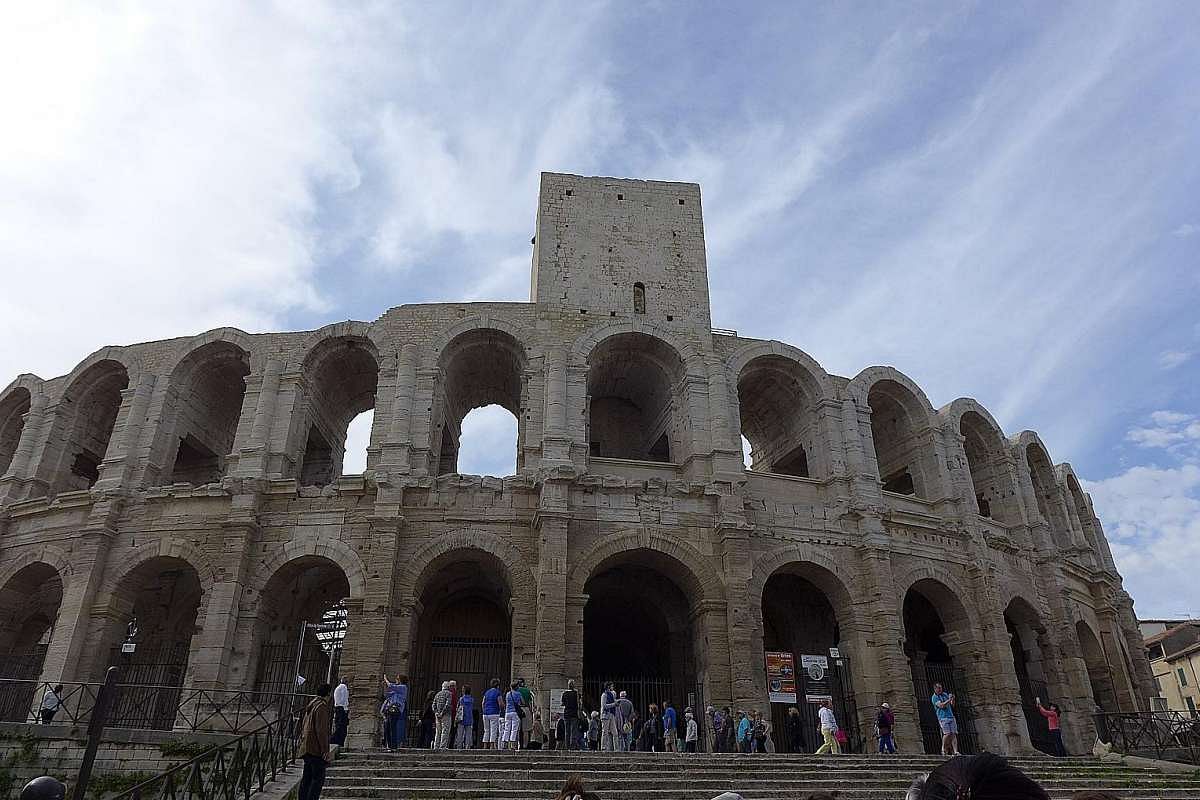
After all, this is the city that inspired van Gogh at his zenith. The Dutchman painted in the sombre hues of northern climes until he arrived in Arles in 1888. He spent 15 months here and zealously produced 200 paintings with swirls of colour, a rendering of the Provencal sunshine and starlight.
We look at the cafe (now named Cafe Van Gogh, 11 Place du Forum, 13200 Arles) where the artist and his French contemporary Paul Gauguin met, drinking strong absinthe. Van Gogh, who was diagnosed with mental illness in Arles, painted this yellow cafe, luminous under a cobalt sky pierced with diamond stars (Cafe Terrace At Night, 1888).
Roussillon, set on ochre cliffs, is another city of light and colour. Ochre, an earth pigment, comes in natural reddish shades, such as sunset orange, russet and rust, and the facades of Roussillon are in this palette.
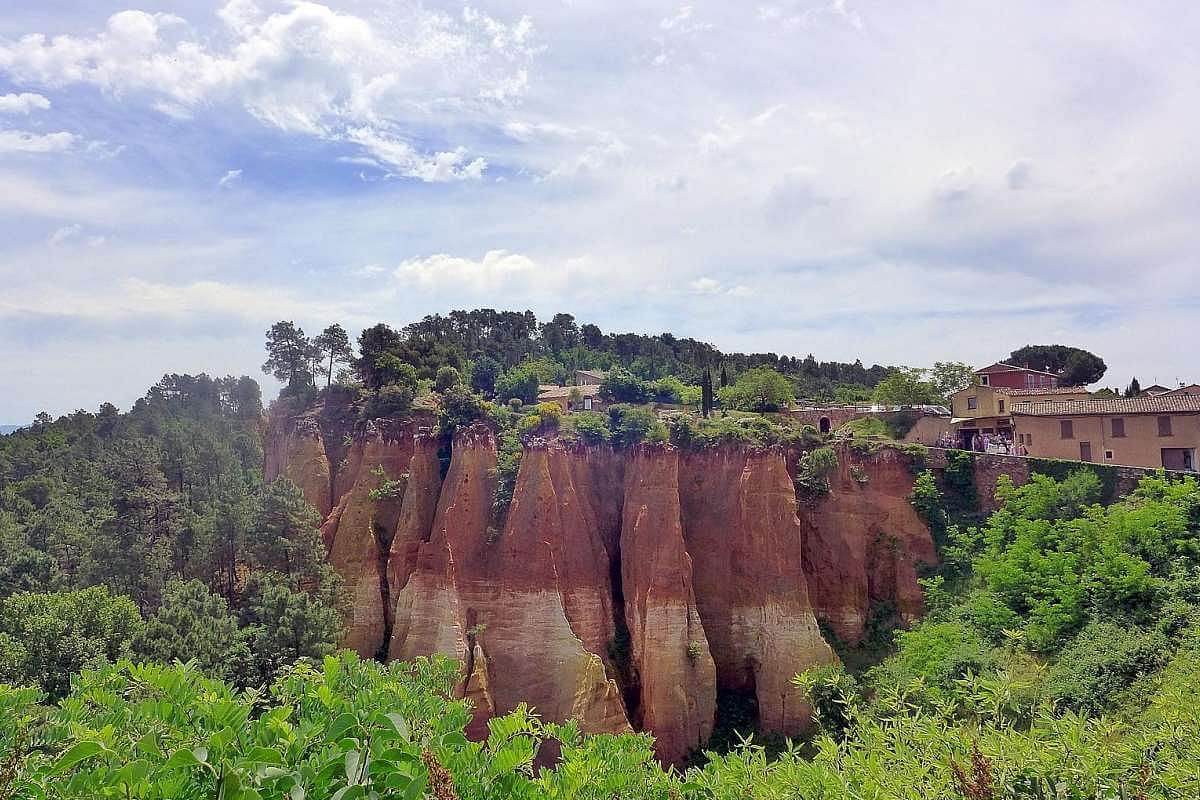
In this cheery red city, on a market day, I buy caramel almonds freshly roasted by a young man. I sample the local produce of lavender-tinged honey and bring home my own can of sunshine, sardines in lemon and olive oil.
Even more dramatic is Gordes, a city of layered limestone terraces on a craggy hill. For the perfect view, I walk along a winding road to the hill opposite and Gordes rises like a fabulous confection studded with cypresses, chic cafes, chapels, old stone houses and steep labyrinthine streets that once confused invaders.
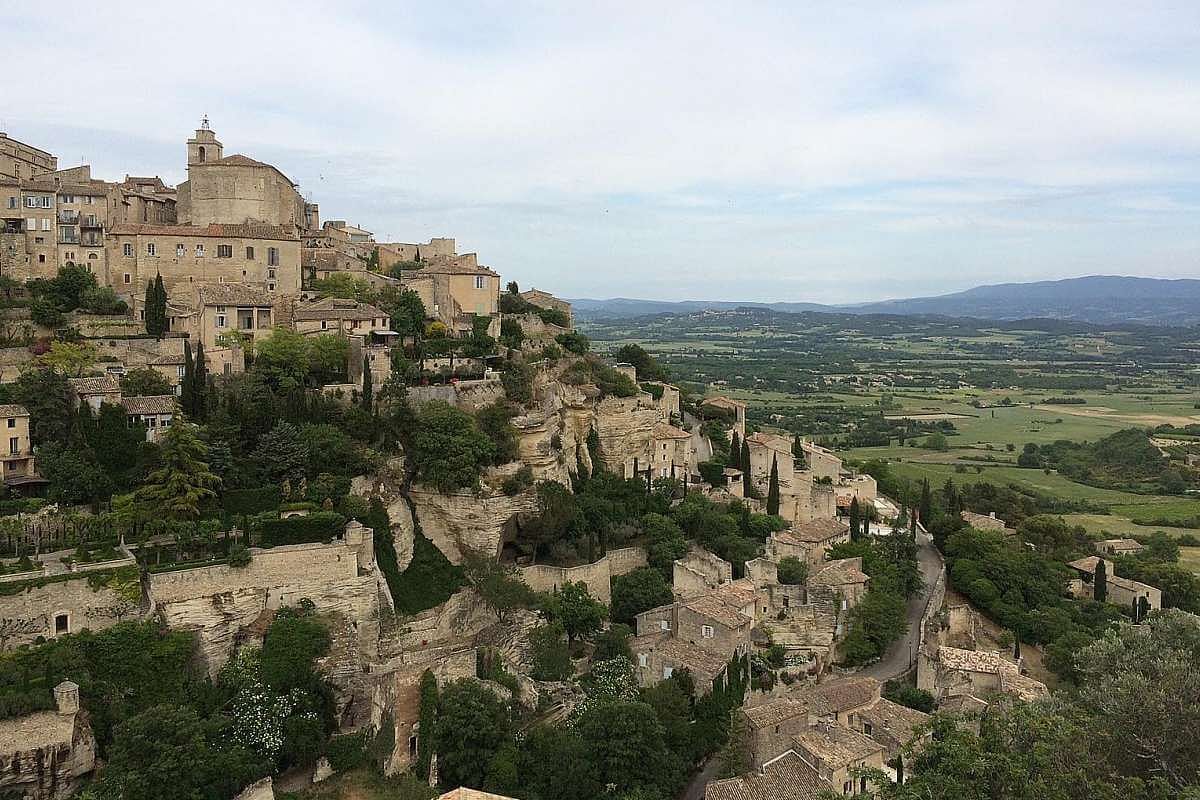
For Gordes is a "village-perche" or perched village set in a high, defensive position. It has the austere rock-of-ages look of a fortress, but its old quarter, where our fancy hotel, La Bastide de Gordes (bastide-de-gordes.com), stands, is a quaint space with a boulangerie, art gallery and chateau.
Here, too, is the Saint Firmin chapel, with a faded stone pulpit, pipe organ, statue of the crucified Christ and domed ceiling painted in cornflower blue - all the accoutrements of an old Catholic church and one of so many I have seen. Still, the chapel has a pensive air all its own, I imagine, as we have learnt about the hard life of perched-village residents, who once lived with scarce water in inaccessible spots purpose-built to repel enemies.
Somewhat sweeter is Fontaine de Vaucluse, with its old-fashioned water wheel and sound of water flowing from an unseen spring. Behind the city are mistral-eroded limestone mountains with intriguing caves.
I love the tiny folk-art museum, Musee du Santon (Place de la Colonne, 84150 Fontaine de Vaucluse; admission €5). A fascinating hour or so is spent peering at the little hand-painted terracotta figurines (santons) of Provencal villagers and their wrinkled, expressive faces, as they gather wood, read the paper, adjust a tiny shawl in front of a mirror, play cards, knit with miniature balls of real wool - slices of Provencal life past. Folksy French music plays in the background while the kindly curator, elderly like the santons, hovers now and then to point out highlights - elaborate nativity scenes, for instance, and a humorous tableau of a man, in seven sizes, clutching his hat as the mistral blasts.
The santons convey the sweetness and toughness of life in Provence, and the musee is a magical step back in time for visitors.
PROVENCE, BEYOND THE POSTCARD
And so there is a Provence that lies beyond the postcard depictions of dreamy villages, olive groves and eternal summer.
True, Provence enjoys 300 days of superb sunshine, but there is also an edge or a complexity to this idyll, sensed in the lacily jagged Dentelles mountains, heartstoppingly gorgeous cities planted on cliffs to deter killers, and even the mistral that is a balm and a banshee.
•The writer's trip was hosted by Country Holidays.
•Follow Lee Siew Hua on Twitter @STsiewhua.
Five gourmet experiences during the seven-day nomadic feast in Provence
1
MICHELIN BANQUET
We discover our perfect Provence moment at the two-Michelin-starred La Bastide de Capelongue. The inventive multi-course dinner on the secluded hilltop restaurant beguiles - from the oak-smoked butter to the escargot immersed in lightly creamy broth, spiked with wildflowers and also a bracing, bitter stalk to whet the appetite.
At 10pm, ensconced in our luxurious little corner scented by lilies, we are relaxed and just starting on the main course of oven-roasted quail, moistened with coriander juice. Chef Edouard Loubet is in Singapore cooking a private dinner so his wife Isabelle hosts us, at one point picking savory from the vegetable garden to show us a sauce ingredient.
The late Provence sunset over the hills of Luberon is a midsummer night's dream.
Where: La Bastide de Capelongue, Les Claparedes, Chemin des Cabanes, 84480 Bonnieux Info: www.capelongue.com/en/

2
YOUNG WINE, DESSERTS GALORE
In our hiking shoes, we chill out on the shaded terrace of Le Mesclun, sipping a young, light-bodied, "happy" red wine from a village 5km away. When we do not order the chef's signature goat cheese (above) for lunch, he sends it anyway and it proves to be delicately flavoured and lovely with baby carrots and other just-picked vegetables from his plot.
It drizzles, so we move to a cosy, contemporary room, where we relish veal done two ways, in an airy fried packet and as a ham-like mince.
It is the good life as we linger over a set of French desserts, from dark-chocolate mousse to pate de fruit (fruit-puree confection) to macaron.
Where: Le Mesclun, Rue des Poternes, 84110 Seguret Info: Call +33-4-9046-9343
3
FOIE GRAS WITH A VIEW
From our elegant rooms, the Restaurant La Citadelle within our hotel is steps away. In our vaulted alcove, we wine and dine with a vista of the Luberon countryside, as the La Bastide de Gordes Hotel is set high on mediaeval ramparts in the citadel-city of Gordes.
I savour five crisp-tender spears of poached asparagus and silken foie gras, served with tart fruit chutney and toast squares. Richly tender lamb chops are paired simply with grilled vegetables.
Where: Restaurant La Citadelle (La Bastide de Gordes Hotel), Rue de la Combe, 84220 Gordes Info: bastide-de-gordes.com/en/home/
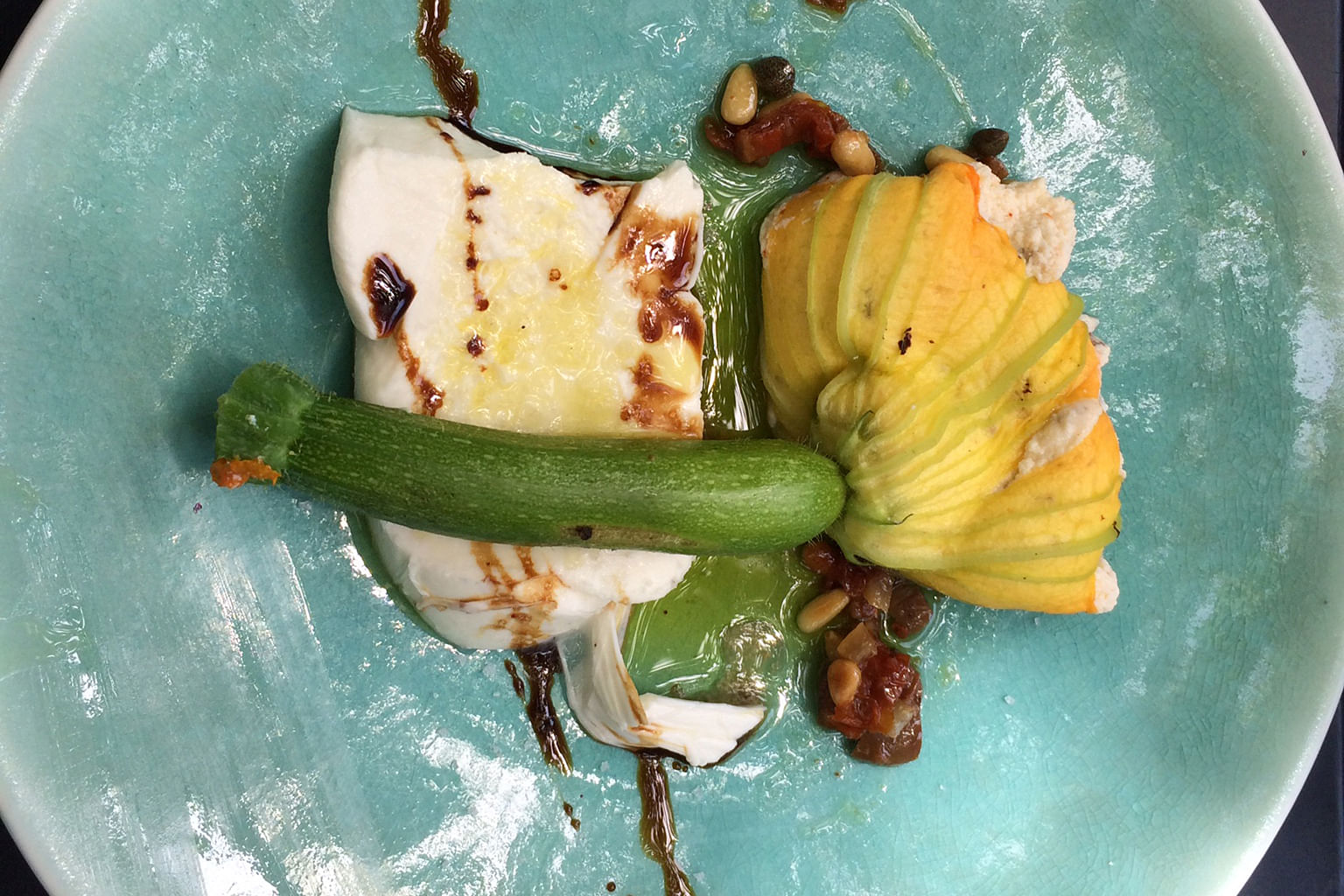
4
FRESH FLAVOURS, LUXURIANT NATURE
We walk on a long driveway shaded by impressive plane trees and flanked by a field of wild red-orange Flanders poppies.
The Le Pont de l'Orme restaurant has a luxuriant spaciousness and we lunch outdoors, on a terrace under a trellis of vines, while a cocker spaniel puppy plays.
Pork, chicken and liver terrines are served in a rustic oval container. The octopus ceviche comes with beet sauce and olives. I love the lightness of the zucchini flower stuffed with ricotta (above), and the seared tuna.
Where: Le Pont de l'Orme, Route de Suzette, 84340 Malaucene Info: Call +33-4-9046-1750
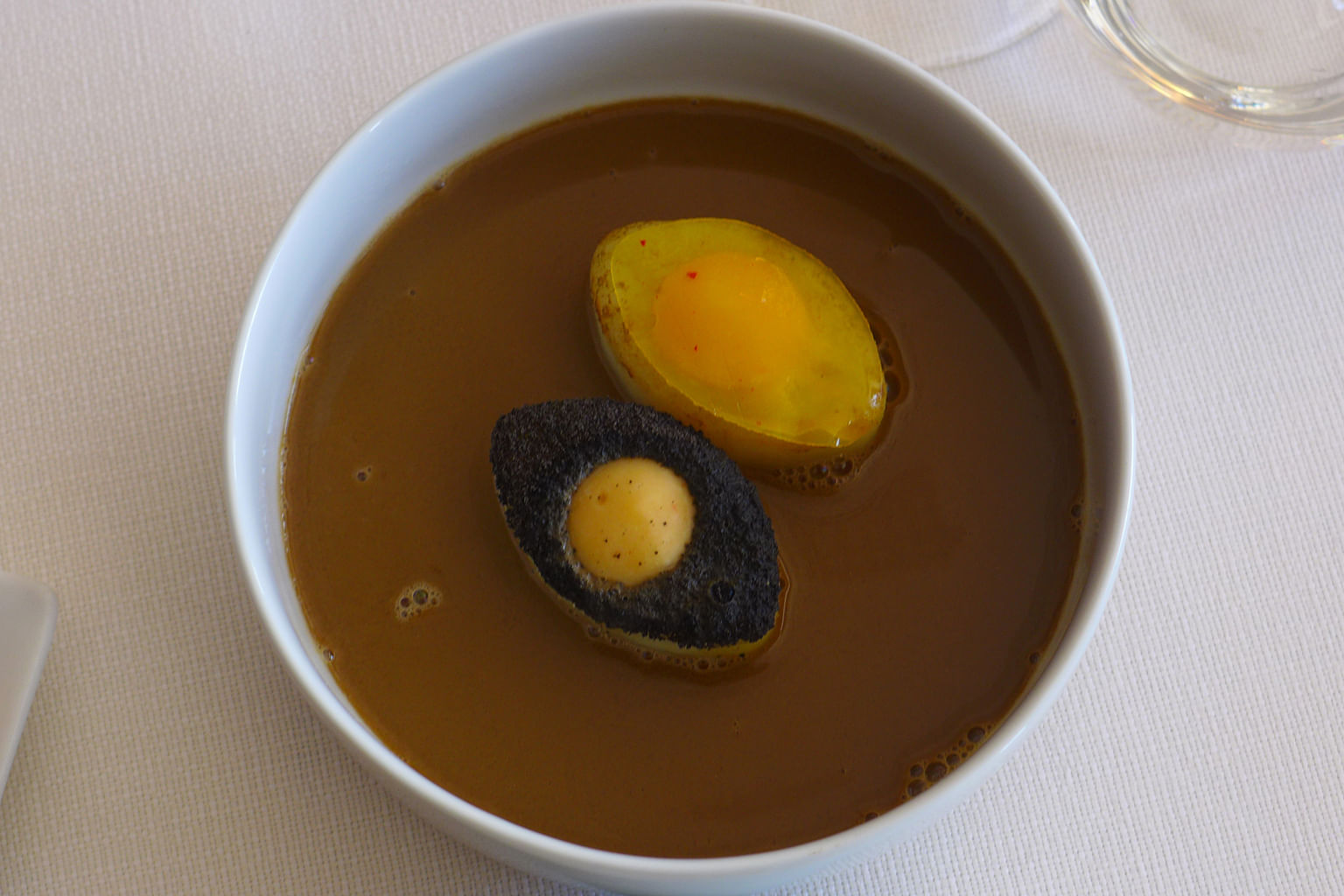
5
DECONSTRUCTED BOUILLABAISSE
Bouillabaisse is the flavour of lively port-city Marseille. Originally concocted from scraps of fish and shellfish and cooked in a pot of sea water, this fisherman's stew is elegantly reimagined (above) at Une Table, au Sud, a serene space with a view of white sails.
Petite portions of sea bass, red mullet and hake are arranged on a plate and a luscious bouillabaisse is poured onto the fresh fish.
Every dish at lunch has finesse with a bit of punch. A long slice of robust squid-ink bread sits with slender ribbons of vivid vegetables, beet and carrot included.
For dessert, flamboyant chocolate petals are paired with a citrus-passionfruit sauce and spiced ice cream. We order a Domaine Gavoty 2015 rose, as refreshing blush-pink rose wine is also redolent of Provence.
Where: Une Table, au Sud, 2 Quai du Port, 13002 Marseille Info: Call +33 4 9190-6353 or e-mail unetableausud@wanadoo.fr
Join ST's Telegram channel and get the latest breaking news delivered to you.
A version of this article appeared in the print edition of The Sunday Times on May 21, 2017, with the headline Essence of Provence: Sun-lit sensuousness, sumptuous food, hilltop cities. Subscribe

